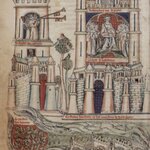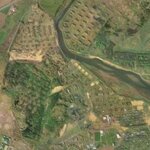Science History

We've all heard how the wheel is one of man's greatest inventions, and there are many theories or ideas regarding how it was achieved. Certainly it seems rather plausible that rolling logs probably played a role in this development.
However, the more I think about it, the more this invention seems to fall short. It occurred to me that we were focusing on exactly the most obvious, yet wrong part of the wheel and missing the important bit. A wheel is fundamentally useless, but the true stroke of human genius was the invention of the axle.
It was only through the axle that two…

The Struggle for Existence was the title Charles Darwin gave to Chapter Three of On The Origin of Species, and he went to some trouble to explain exactly what he meant by this struggle. Throughout the chapter we find:
“I use the term Struggle for Existence in a large and metaphorical sense, including dependence of one being on another, and including (which is more important) not only the life of the individual, but success in leaving progeny.” ...
“there is a frequently recurring struggle for existence,” ...
“Every being, which during its natural lifetime produces several eggs or seeds, must…

If there's one thing you've heard over and over, it's that mean old religion has always been the enemy of science.
It isn't true, of course, but at least in America, with its Protestant heritage, anything that slammed Catholics got traction and, among atheists, anything that slammed religion was believed without skepticism.
A new book by James Hannam called "God's Philosophers: How the Medieval World Laid the Foundations of Modern Science" seeks to gain some respect for medieval scientists and, if religion gets sucked along in the jet wash, that's okay too.
The intellectual history of…

The Voynich Manuscript part 6 : The Other Babylon
When I first saw images from the Voynich manuscript, I was interested in the unusual script. As a linguist, my first thoughts were about the possible underlying language. As I have repeatedly stated since part #1 of this series, it is futile to try to decode an unknown script without first accumulating as much background information as possible. All clues must be examined in order to create a sort of mental Venn diagram: a set of overlapping areas at the intersection of which the major clues to the puzzle are all found.
My…

The Voynich Manuscript part 5 : The Baghdad Connection
The most obviously strange feature of the Voynich manuscript is its unknown script. Quite simply put, the script cannot plausibly be shown to be similar to, or derived from, any known script, ancient or modern. As a linguist I am naturally intrigued by this. As a I have repeatedly stated in this series of Voynich articles , it is futile to try to read an unknown script in an unknown language without first finding as many clues to the underlying language as possible. Seeking clues related to the herbal section…

The Voynich Manuscript part 4 : Not So Mysterious ?
The Voynich manuscript was written in an as yet unreadable script. It is named after Wilfrid Voynich, who acquired it as a dealer in 1912 from the library of Villa Mondragone, a Jesuit college in Frascati, Italy. It is now in the care of Yale Library.
In my previous articles on Yale Library's Beinebecke MS 408 I focused on its background. I am now going to discuss some basic possibilities about its unusual script. I am still working on an attempt to transcribe the text into modern English. If I succeed, my…

There are things or entities in or on an object that could be present and be proven to exist by experiments and yet one can not see because they are too small to be seen by our naked eyes or some cannot be seen at all. Examples are viruses, bacteria, molecules, ions, atoms, forces, forms of energy, etc.
People of long ago, at around 5th century B.C., a Greek Philosopher named Leucippus thought that water has an ultimate particle that cannot be subdivided. His idea was later expanded by his student, Democritus who named these possible indivisible particles as “atomos”. From there, scientists…

In 1981 Robert Axelrod and Bill Hamilton published a paper titled The Evolution of Cooperation in which they analyzed game theory as a means of explaining the emergence of cooperative behaviour. In 1984 Axelrod published a book titled The Evolution of Cooperation in which he again examined game theory as an explanation for the emergence of cooperative behaviour. In 1988 Axelrod and Dion published a paper titled The Further Evolution of Cooperation in which they yet again discussed game theory as an explanation for the emergence of cooperative behaviour, and in 2000 Axelrod presented a…

Random Noise #16 : Dangerous Knowledge
... holding the paper with one hand, and jumping up and down as she works the pumping-handle with the other, she pushes dynamite down the tube till the paper cylinder is filled to a depth of about three inches....To see this operation - the brass rods flying up and down, damp with nitroglycerin, and dynamite being forcibly jammed down a brass tube - entirely destroys your appetite for further knowledge.
H. J. W. DamFrom a description in McClure’s Magazine, August 1897, of the Ardeer explosives factory founded by Alfred Nobel.
Google Earth image of…

This Memorial Day weekend, it is tradition to visit the graves of our fallen military soldiers – to remember, appreciate, and honor the lives given in service to our nation’s security and freedom. It is humbling to visit a national cemetery and see the thousands of headstones – each representing a life, a story, and a service to our country.
Arlington National Cemetery in Washington D.C., is the most recognized resting place for those that have served our country. But near Tucson, Arizona, there is a resting place of another kind – one that houses monuments that chronicle American history…